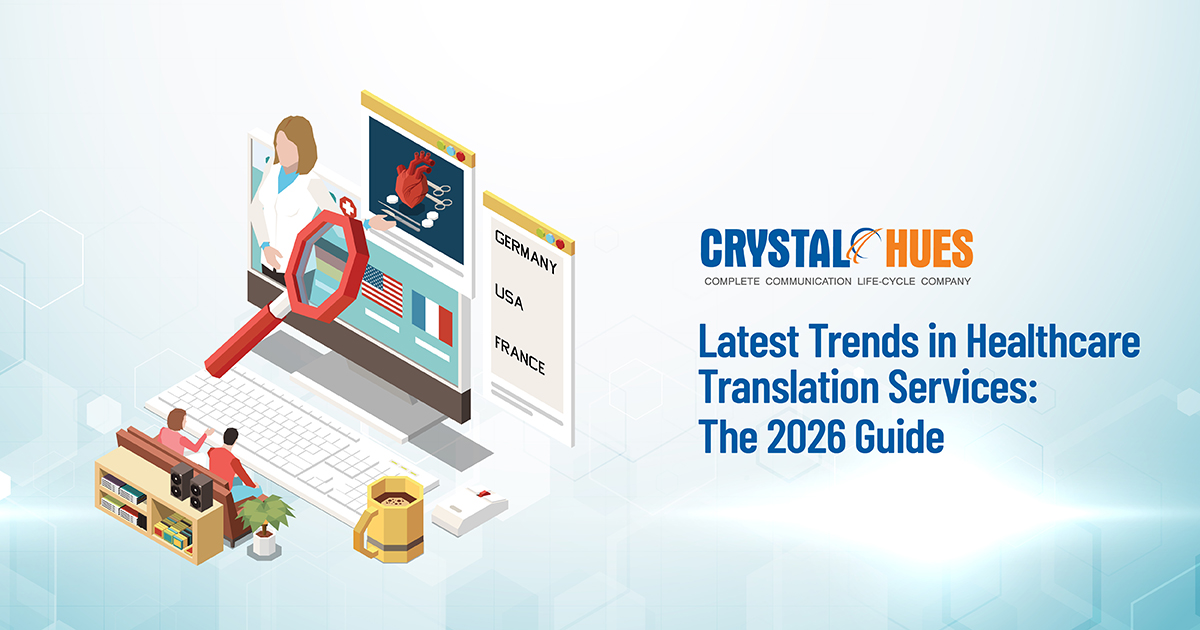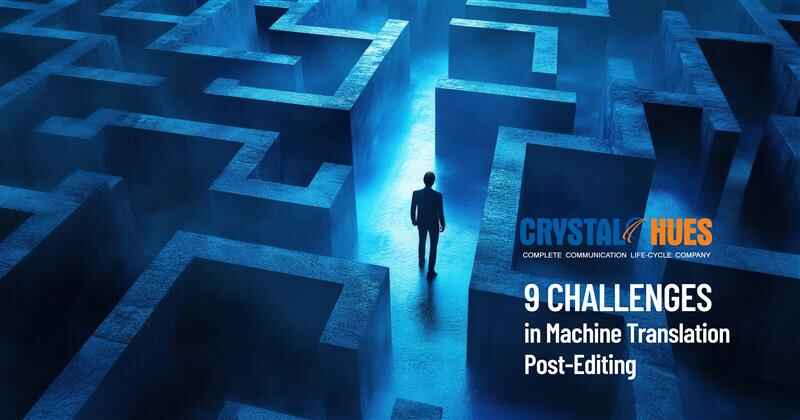
Top Healthcare Translation Trends for 2026: The Complete Guide
In healthcare, the right translation can save lives.
The Medical translation industry is transforming fast. It’s powered by new technology and guided by a strong sense of ethics. As healthcare goes global and digital, the need for fast, accurate, and culturally aware communication grows stronger than ever.
In this guide, we explore the trends shaping healthcare translation and why they matter to hospitals, pharmaceutical firms, LSPs, and patients alike.
1. AI-Powered Hybrid Workflows in Healthcare Translation
The most notable change is the conjunction of human ability with AI. Machine translation and human post-editing, often called MTPE, is no longer a test-based process. It is a standard procedure these days. Hospitals are using it to translate clinical protocols and support internal learning. Pharma companies use it for multilingual marketing assets.
What is new is the role of humans?
The translator's function has evolved beyond simply being a language specialist to a cultural intelligence adviser. Their charge is to take the AI-generated translation and make it flow smoothly while retaining the emotion behind a message. Effectively, tone and sensitivity in communication matter as much as translation accuracy does when communicating with patients.
2. Smarter Terminology & Modular Content Reuse in Healthcare Translation
Healthcare organizations have too much documentation, and reusing language is a practical necessity. Content frameworks, like DITA and XML, would allow translators to reuse approved text blocks instead of having to reinvent the translation every time. Translation memories and glossaries move through the departments and your whole organization seamlessly to ensure consistency through trials, regulatory filings, and patient leaflets.
This saves time, reduces cost, and reduces human factors—all wins in their own right!
3. Inclusive Healthcare Translation: Bridging Gaps in Health Equity
The conversation regarding health equity has finally made it into the translation room. Translators are modifying their work for varied literacy levels, cultural backgrounds, and languages that often have limited resources. There’s just as much of a need for gender-neutral languages in health care translations as there is for plain language translations.
Culturally adapted communication enhances trust with patients and improves patient engagement. The goal of the translation project is not only to translate words but also to convey emotion and tone, connecting people on a human level.
4. Localization for Digital Health and Medical Apps
With telemedicine and the use of health apps redefining patient health care provider interaction, the localization industry has transformed from translating text. Teams will modify user interfaces, check layout alignment for different languages, and test design responsiveness for a specific region.
Integrating EHR is another major advancement. Translation systems are being integrated directly into EHR platforms so physicians can quickly access translated materials or a patient’s preferred language. It saves time in high-stakes situations and promotes more inclusive care.
5. Real-Time Translation Tech in Telehealth and Healthcare
Video remote interpreting (VRI) and other remote platforms for interpreting in telehealth are now commonplace in many systems.
Several hospitals also utilize automated voice-to-text technology, as well as multilingual chatbots, in support of patient intake and follow-up.
The more experimental aspect of this trend, augmented reality (AR) translations, is even more exciting. Clinical staff wearing smart glasses that would instantly translate instructions or patient information with an overlay are still at a conceptual stage, but pilot projects are already demonstrating significant benefits in multilingual settings.
6. Healthcare Translation Compliance and Data Security in 2026
Regulatory obligations will certainly increase as new regulations come into effect. Complying with HIPAA, GDPR, ISO 17100, or other relevant regulations is not optional if your organization processes patient data; it is a requirement. Secure language service platforms offer security features such as encryption and tracking data use throughout the process.
With the new EU regulations, such as the Accessibility Act and the AI Act, there will be a regulatory framework that considers inclusivity and transparency, and that will most certainly apply to the development and testing of localized content.
7. Sustainable Localization: Green Practices in Healthcare Translation
Across all industries, the localization process is becoming more sustainable. Translation service companies are moving towards a 100% paperless and cloud-based model. Some are even looking into metrics such as energy consumption per word translated or “green localization” certifications.
It is not just good for the planet, but a smart business practice that resonates with clients investing in ESG responsibility.
8. Specialized Medical Translators and Collaborative Workflows
Healthcare translations are not something generalists can simply "pick up." It requires translators who specialize in discrete areas of healthcare, such as oncology, neurology, and clinical trials. These specialists are now working closer than ever with cross-functional teams, including clinical staff, regulatory officers, and localization managers, using collaborative Translation Management Systems (TMS).
This collaborative way of working allows individuals to integrate terminology, timelines, and compliance, changing translation from a service function to a purposeful function of healthcare.
Quick Recap: Key Healthcare Translation Trends for 2026
Trend | Description |
AI-Powered Hybrid Workflows in Healthcare Translation | Efficiency from MTPE, quality from human review. |
Smarter Terminology & Modular Content Reuse in Healthcare Translation | Consistency and faster turnaround. |
Inclusive Healthcare Translation: Bridging Gaps in Health Equity | Accessible, culturally aware communication. |
Localization for Digital Health and Medical Apps | UX-ready translation for apps and EHR. |
Real-Time Translation Tech in Telehealth and Healthcare. | Live interpreting and experimental visual translation. |
Healthcare Translation Compliance and Data Security in 2026 | Secure, transparent localization processes. |
Sustainable Localization: Green Practices in Healthcare Translation | Cloud-based, low-carbon translation workflows. |
Specialized Medical Translators and Collaborative Workflows | Medical-focused translators integrated into teams. |
Final Take: The Future of Healthcare Translation in 2026
In 2026, translation services in healthcare will be a balancing act between automated processes and empathetic approaches; between speed and security, human and cost-efficient processes.
While AI will always be faster than human translators, the value in translation work will remain within the understanding of culture and lived experiences.
As medicine continues to be more globalized, it will always be the language that makes care truly personal.
You have reached the end. Thank you for reading our blog. We hope you found it informative and useful. For more such content on to help you stay informed on AI and our language services, you can check out our blog page here.
If you have any feedback or suggestions on what you’d like for us to cover or how we can make our blogs more useful, you can reach us through our LinkedIn inbox or email us at digital@crystalhues.in.



